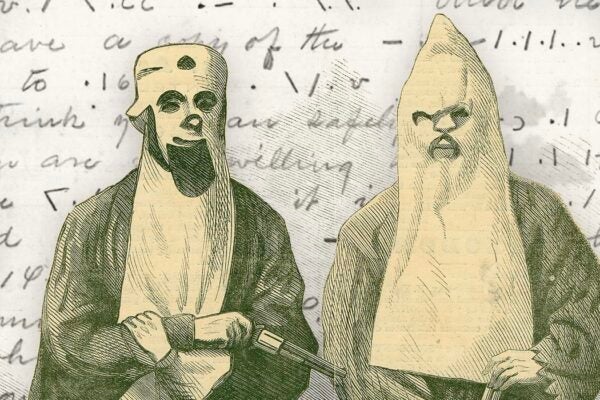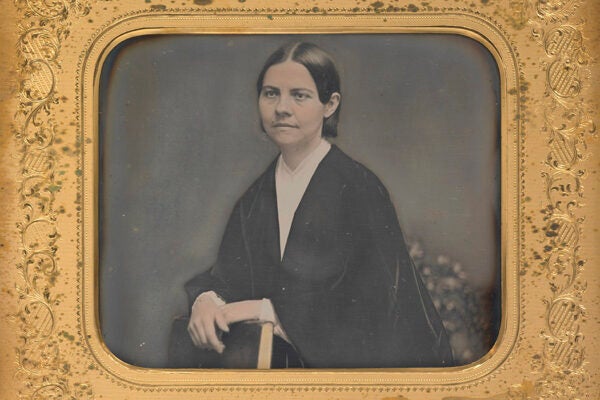Even before the Great Famine (1845–1852) propelled more than two million refugees from Ireland, the Irish diaspora in the United States had become the bulwark of the struggle for Irish independence. Exiles, particularly of the unsuccessful Rebellion of 1798, built the foundations of this nationalism. Though later Irish immigrants would be predominantly poor and Catholic, these earlier ones were “mainly middle-class and often Protestant,” explains historian David Brundage.
Matilda Tone was one of them. It was through her work that her late husband Theobold Wolfe Tone, one of the founders of the Society of United Irishmen, was “constructed as the potent hero and symbol he became to subsequent generations of Irish republicans on both sides of the Atlantic.”
Wolfe Tone was court-martialed and sentenced to death by hanging for his role in bringing French soldiers to Ireland. Wanting to be shot as a soldier instead of hung as a criminal, he killed himself in jail in late 1798. He would become an iconic figure of Irish nationalism, his vision of a secular Ireland stated forthrightly: “to substitute the common name of Irishmen in place of the denomination of Protestant, Catholic, and Dissenter.”
The 1826 American publication of the “mammoth two-volume” Life of Theobold Wolfe Tone was, Brundage writes, “arguably one of the Irish diaspora’s greatest contributions to the making of republican nationalism.” Tone’s son William had his name on the title page, but historians now agree that Matilda was the force behind it.
Because Matilda Tone was not an Irishman, her critical role in the cultural “construction and transmission across generations of nationalist memory” was barely acknowledged until recently. Brundage argues that the role women like Matilda Tone carved out for themselves in the narrow gender confines of Irish republicanism “proved to be more important for the long-term fortunes of the republican project” than “direct forms” of participation, which very frequently lead to violent death.
“Most historians of Irish nationalism—and other nationalist movements—[have tended] to focus on political action and leadership rather than on cultural activity and representation,” Brundage writes, “a focus that has almost inevitably privileged the role of men over women.”
Irish immigrant women like Matilda Tone kept “the memory of separatist republicanism alive and well in America even as it grew dimmer in Ireland itself.”
Matilda Tone, born Martha Witherington, was the daughter of an Anglican draper in Dublin. In 1785, when she was sixteen, she eloped with Tone, then twenty-one. Protestant as well, Wolfe Tone argued for Catholic emancipation and universal manhood suffrage. They both fled Ireland together in 1795, to live in exile first in America and then in France. Matilda would never see Ireland again. Wolfe Tone would be buried there.
After marrying a Scottish radical named Thomas Wilson in 1816 in France, Matilda tried to go back to Ireland, but the British government saw her as a “potential symbol and rallying figure for Irish republicans” and said no. She spent the last thirty years of her life in the Georgetown neighborhood of Washington, DC. She would be widowed a second time in 1824. All three of her children predeceased her, victims of tuberculosis. She died in 1849, just two weeks after asking a visiting Irish exile about “poor old Dublin” and admitting she still longed for her native land.
Matilda Tone Wilson brought Wolfe Tone’s “mass of unpublished papers—his autobiography, diary, letters, and assorted political memoranda—as well as copies of his published articles and pamphlets” with her to America, Brundage writes. The resulting biography totaled more than 1,200 pages, but it was devoured by readers.
Weekly Newsletter
Until Tone’s Life was published, the writing of the history of the 1798 rebellion was dominated by the victors. The Life was definitely hagiographic—Tone’s bitter comments about his sojourn in George Washington’s America and details of his womanizing were left out—but it guaranteed that the events of 1798 from the republican side would not be forgotten.
“The impact of Tone’s Life on later generations of Irish republicans was enormous,” writes Brundage. He tracks its influence through the nineteenth and twentieth centuries. Young Ireland, the Fenian Brotherhood (they made Tone’s grave a shrine), the Irish Republican Union, Clan na Gael, Sir Roger Casement, leaders of the Easter Rising, and, starting in the 1970s, Sinn Fein and the Provisional IRA, all claimed Tone as their model and inspiration.
As it happened, the Good Friday Agreements ending thirty years of “the Troubles” were signed in 1998, two centuries after Tone’s death.







